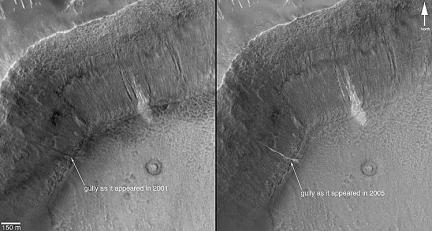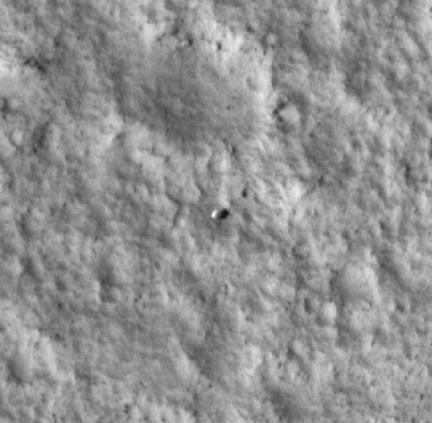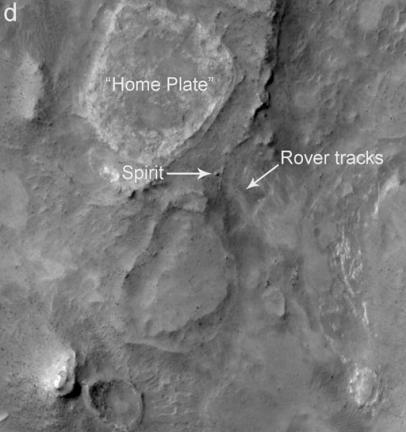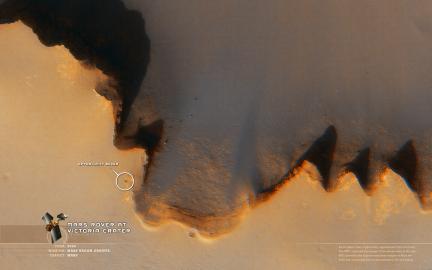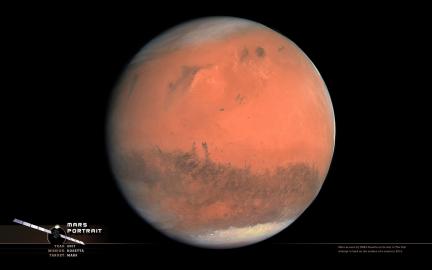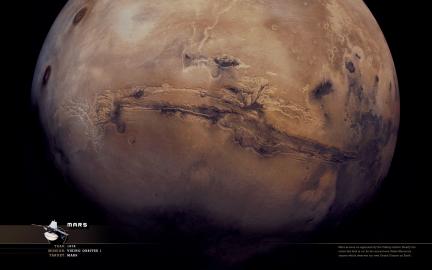There are two schools of thought in the world on extra-terrestrial life coming from people who think seriously of such things. One is that the universe is teeming with life, yes… teeming. A good majority of folks these days think the universe is lousy with life forms. The second theory is that here on Earth life is a rare and possibly singular event. Either of these conclusions are quite a leap of faith for lack not only of evidence, but for opportunities to even discover any of the evidence needed to support either assertion. You see, the universe is spread out in a big way. It takes light from Earth a bit over 4 years to reach the nearest star to our sun Alpha Centauri, meaning that any astronomers at Centauri who might be peering out in our general direction see us as we were 4 years ago. So if it takes light that long to get to our nearest neighbor, you can imagine how long it would take our fastest, newest spacecraft to reach there. Using technologies not even mature enough to consider actually using, it still could take us 40+ years just to reach that nearest star… and that’s probably a liberal estimate.
So apart from someone developing a hyper-warp drive which can surpass the speed of light (which they tell me is not only impossible but pose an awful lot of other difficult circumstances) or someone at SETI (Search for Extra Terrestrial Intelligence) picks up a faint and 25 year old signal coming from Vega (see the film Contact for reference), it would seem for the time being we are stuck having to search our own neighborhood.
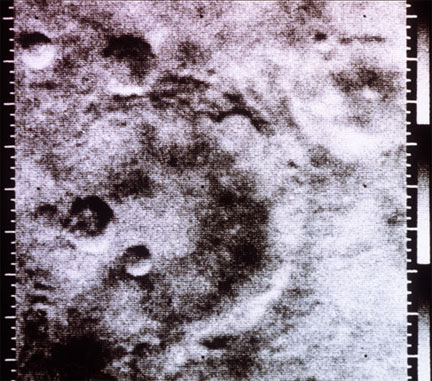
About 30 years ago the outlook for life in our own solar system seemed bleak. The moon was as desolate as one could imagine and Mars when spied by Mariner 4 for the first time, up-close (see above), shocked and disappointed many with a surface that seemed more akin to our moon than with Earth. Gone were all the dreams of Martians directing canals to their great cities or even the hope of a Mars rat scurrying across the red dunes. In addition to this, the assumption was that the rest of the Solar System was hopelessly cold and unworthy of hosting even the smallest of microbes. The gas giants were surface-less hostile environs, most bodies lacked breathable air of any kind and Venus was so hot it would immediately fry anything hoping to eek out a living on its surface. Finally, after the Viking landers determined Mars to be lifeless in the 70’s (in what many now call a flawed experiment) most gave up hope and began seeing the Solar System as nothing more than a place filled with mostly cold lonely destinations offering mankind little more than an ultimate challenge of survival away from home. That was until Voyager sped by Jupiter and its moons a few years later and a small world most have never even heard of, named Europa, held out a glimmer of hope to those in the know.
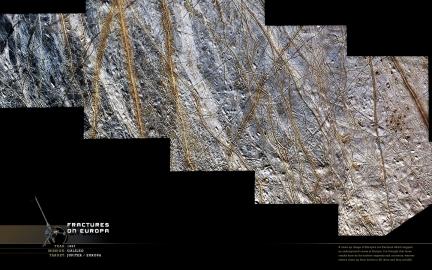
After returning the first images of Europa’s surface riddled with ridges, cracks and what looked like considerable geological activity (see above wallpaper, actually taken by the Galileo not Voyager) many began to speculate these features must be the result of a vast underground ocean which causes stress on the outer “shell” and causes it to crack. This theory was propped up further when Galileo arrived at Jupiter in the 90’s. Much better resolution images revealed much greater detail including what appeared to be “icebergs” in a large region that from a distance appeared to look like shattered glass. You could easily see where one “berg” broke off from another and floated a distance away by some means (see below). This makes many as sure of the underground ocean on Europa as you can get without actually drilling down through the icy crust and plunking down into the wet core.
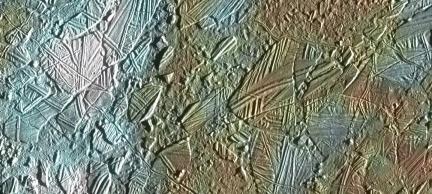
So if we have a moon made largely of water ice, who is being internally heated by tidal forces coming from Jupiter, we can almost assume that much of this body would be melted ice as you move down from the rock-hard frozen surface toward the warm center… and… one can assume that somewhere in between hot in the middle and cold on the surface, there may be a large zone of warm waters as cool and warm as that found on any Hawaiian beach. Meanwhile here on Earth, we have found that life survives nearly any hostile environment from 200 degree heat vents of acid water on the ocean floor to microbes found frozen in Antarctica. The theory goes, if life survives in hell on Earth why not a comparable heaven on Europa?


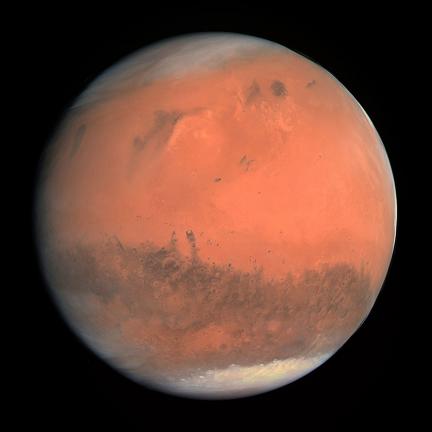

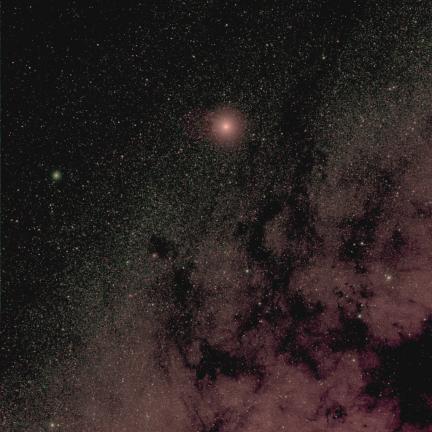
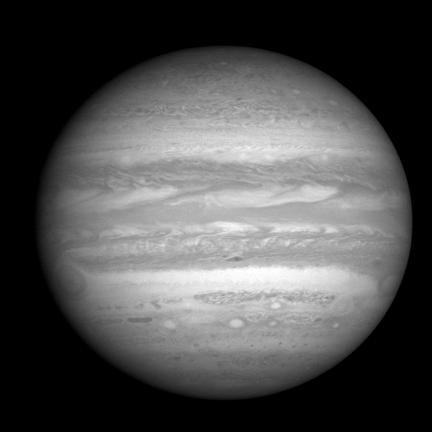
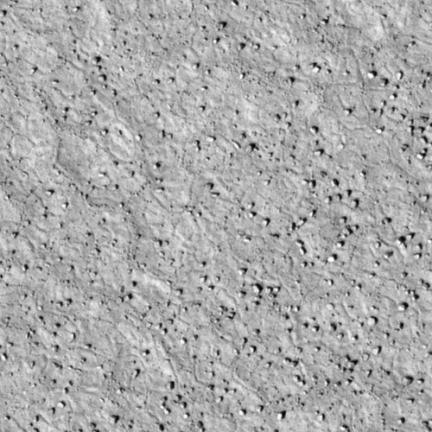
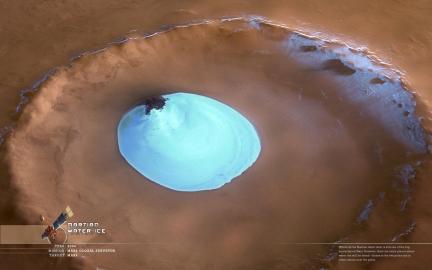
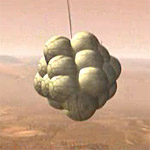 If you have never seen the incredibly real animation of landing a Mars rover on Mars made by the people at MAAS Digital,
If you have never seen the incredibly real animation of landing a Mars rover on Mars made by the people at MAAS Digital,  Now the same masters at
Now the same masters at 
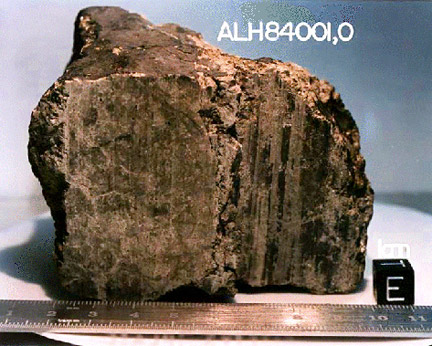
 In the 90’s a paper was published in Science magazine that proposed the discovery of the first organic compounds to be found in a Martian meteorite. Furthermore, the authors of this paper observed that there may be mineralogical features that may be fossil evidence of ancient Martian organisms (see left). Excitement on this finding was high and the impact of its meaning went as high as the President of The United States making a specific statement on it at a news briefing, after all, it would be the first evidence of life outside of Earth to have ever been detected. Since that exciting time, many scientists have come out to refute each of the individual findings and have stated that they each could have each come from processes which were non-biological. However, the paper’s authors still contend that circumstances are far too coincidental and that “when considered collectively… we conclude that [these phenomena] are evidence for primitive life on early Mars”.
In the 90’s a paper was published in Science magazine that proposed the discovery of the first organic compounds to be found in a Martian meteorite. Furthermore, the authors of this paper observed that there may be mineralogical features that may be fossil evidence of ancient Martian organisms (see left). Excitement on this finding was high and the impact of its meaning went as high as the President of The United States making a specific statement on it at a news briefing, after all, it would be the first evidence of life outside of Earth to have ever been detected. Since that exciting time, many scientists have come out to refute each of the individual findings and have stated that they each could have each come from processes which were non-biological. However, the paper’s authors still contend that circumstances are far too coincidental and that “when considered collectively… we conclude that [these phenomena] are evidence for primitive life on early Mars”.


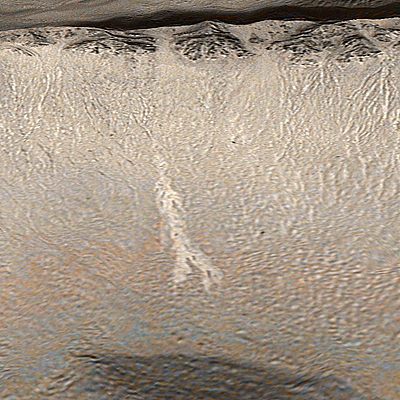 There seem to be 2 new “gully” sites with light toned markings on the surface that suggest that liquid water has flowed as recently as within the past 7 years on Mars. The smoking gun is revealed in earlier images taken of the same region with these details not present and this is what gives NASA the time frame of 7 years.
There seem to be 2 new “gully” sites with light toned markings on the surface that suggest that liquid water has flowed as recently as within the past 7 years on Mars. The smoking gun is revealed in earlier images taken of the same region with these details not present and this is what gives NASA the time frame of 7 years.
